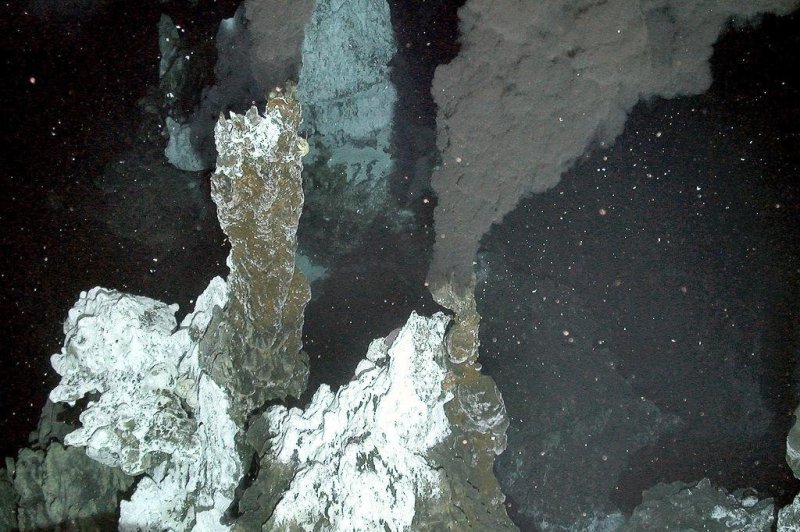A satellite image shows a plume of mineral-rich water rising to the surface from hydrothermal vents of the floor of the Southern Ocean. New research suggests the vents output fuels springtime phytoplankton blooms off the coast of Antarctica. Photo by NERC/NSF Chesso Consortium
June 5 (UPI) -- Scientists have discovered a link between seafloor vents and massive phytoplankton blooms on the surface of the Southern Ocean.
According to a study published this week in the journal Nature Communications, powerful hydrothermal vents are propelling streams of warm, mineral-rich water to the ocean's surface off the coast of Antarctica, encouraging the proliferation of phytoplankton populations.
"Our study shows that iron from hydrothermal vents can well up, travel across hundreds of miles of open ocean and allow phytoplankton to thrive in some very unexpected places," Mathieu Ardyna, a postdoctoral scholar at Standford University, said in a news release.
Ardyna and his colleagues first noticed the signature of large algal blooms via data collected by a fleet of robots outfitted with optical sensors floating in the Southern Ocean. The blooms were located in a region of ocean notorious for its lack of iron, an ingredient essential for phytoplankton growth.
Scientists knew something was bringing iron to the surface, but they didn't know what. Through a process of elimination, scientists identified upwelling as the most likely explanation for an influx of iron. Other common sources of marine iron, including continental shelves, melting sea ice and atmospheric dust, were too far away.
A system of hydrothermal vents lie some 750 miles beneath the site of the phytoplankton blooms. To determine if the vents were a satisfactory explanation for the blooms, Stanford scientists sought the insights of experts in ocean modeling.
Recent ocean modeling efforts have suggested hydrothermal vents play an underappreciated role in the movement of minerals and nutrients throughout the ocean column. But scientists wanted to confirm model predictions using real observations.
Using data collected by Argo floats, scientists were able to track chlorophyll levels and plot the development and growth of phytoplankton populations. They also surveyed records of helium levels measured by a series of scientific cruises in the 1990s. Hydrothermal vents release large amounts of helium from Earth's ancient crustal layers.
Scientists determined a pair of strong circling currents in the Southern Ocean carried rising iron and other nutrients to malnourished phytoplankton populations off the coast of Antarctica. When spring arrived and the sun hit the surface of the ocean, the bloom exploded in size.
The blooms last about a month. Over a period of weeks, they drift eastward and are consumed by marine wildlife. The leftover biomass sinks back into the deep ocean.
The findings suggest periodic algal blooms in the Southern Ocean could provide short-lived oases for a diversity of wildlife, as well as absorb carbon dioxide from the atmosphere.
"Hydrothermal vents are scattered all over the ocean floor," Ardyna said. "Much remains to be done to reveal other potential hotspots and quantify how this mechanism is altering the carbon cycle."















